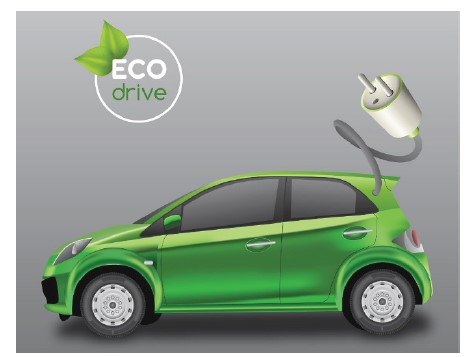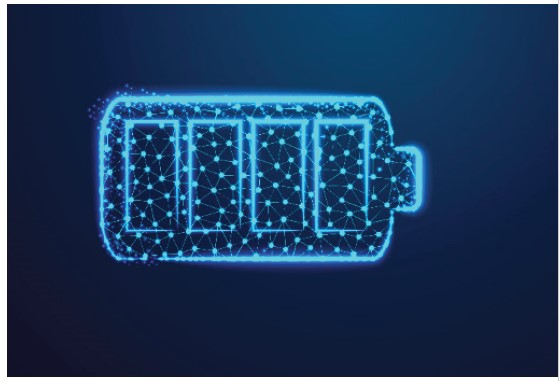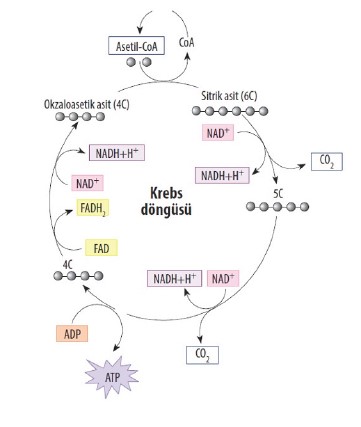As the energy industry is rapidly becoming the driving industry of our age, the work in this field continues unabated. On the one hand, thanks to the methods and technologies that can be used in energy production, we continue to produce energy and use it in different industries, on the other hand, as the value of energy is better understood, public offerings and share values are increasing in the investment sector in such systems. Have you ever wondered why the energy sector is so popular now, or where this process will lead?
Because we know from long years of experience that a product, method, technology, whatever we call it, faces exhaustion after a while, or a different side effect emerges, and at the end of the painful process, new searches begin and we move on to another one. We can say that this process is an adventure that continues by producing-consuming.
In fact, one of the main reasons why the energy sector is so popular today is the search for a return to natural energy sources, while on the other hand, there is also the damage caused to nature as a result of the use of petroleum derivatives and the ever-increasing
costs. It is precisely for these reasons that the search for new energy technologies continues unabated. Of course, there is also the fact that there is no problem in obtaining energy from natural energy sources, as in the case of oil derivatives, if there is no problem in the natural energy source. For example, energies obtained from natural sources such as the sun or wind have a very low risk in terms of these resources. In addition, when we consider the damage caused to nature by petroleum derivatives, the concept of carbon
footprint comes into play and the damage to the environment is enormous. It is precisely for these reasons that we are turning to natural resources.

The process actually started with electric vehicles as an alternative to vehicles that use oil and diesel as fuel. In the early days, when the brake was pressed, the power generated by the pressure arising from the thrust force was stored in the form of electrical energy
and used in the progress phase. In fact, this technology is quite good for low speeds. When you think you are in heavy traffic, it is a continuous movement; stop and go, stop and go. Based on the force applied by the driver who presses the brakes during the stop, we can base the use of the energy arising from that force. It’s reminiscent of the gym bikes that turn on the lights by turning the bicycle pedal. Of course, this technology can be used easily at low speeds, that is, in road conditions that require frequent stops.
If you remember, the first electric vehicles could be used electrically up to a certain speed. Nowadays, however, vehicles can go up to whatever their normal speed is and they can be used for longer periods of time. This is a huge transformation and a process that requires
and involves a huge technological search and innovation. The only reason why energy can be used even at speeds of 180 kilometers, for example, instead of 50 kilometers, is actually related to chemistry. Because there is a serious energy transformation and a serious energy storage system in the background.

Among the systems used, especially Lithium-based batteries and Nickel-based batteries are heavily preferred. These batteries have some differences in terms of their usage. For example, lithium batteries are lighter and have a higher capacity, while nickelbased batteries can be charged faster and have a balanced performance. For this reason, the places where they are preferred may vary. So, can’t we generate energy from waste, especially plastic waste, which has become one of the biggest problems today? Do you think it would be possible to both solve this problem scientifically and offer an efficient alternative to the current energy sector?
Of course it can happen, and it’s not impossible, although it needs serious study. For example, we have radiating bacteria, and we have energy systems in the human body that we produce and store every day. While plants obtain energy for themselves from the
nutrients they produce using sunlight, why not convert these energy types into electrical energy? Let’stake a look at what kind of energy systems are used in our bodies and what are the forms in which we can use them.
The substances stored as energy reserves in the human body are mainly fats, carbohydrates and the last type of metabolite, proteins. Their most important common characteristic is that they are composed of carbon compounds. The change in their preference is due to the fact that they vary according to their use in the body. However, they also have the following chemical in common: Acetyl CoA.

Acetyl CoA is the first component of the so-called Krebs cycle, a cycle in which carbon
atoms are oxidized to produce energy. It also transports carbon atoms into this cycle so
that the energy released from their breakdown can be used by metabolism. Now let’s look
at the type of energy released here.
NADH and FADH2, the chemicals you see on the inside of the reaction circle, are the chemicals that come out of the cycle to produce energy. ATP energy is obtained as a result of the conversion of these chemicals by enzymes. The breakdown of 1 mole of ATP produces approximately 7-12 kilocalories of energy. This energy is consumed in daily activities. For example, riding a bicycle means approximately 300-400 calories for half an hour. Considering the fact that you can produce electrical energy when you pedal this bicycle for half an hour, electrical energy can be produced with the help of molecules with energy reserves using biological bodies.
Where can we use this type of energy? In other words, if we think about where metabolic energy can be used in daily life, if you remember, we just talked about waste. When we categorize those wastes, each of them contains serious carbon bonds.
With the breakdown of the bonds between these carbons, Acetyl CoA, the first molecule of the cycle we have given above, can be reached. Now, as a result of the cycle in which Acetyl CoA will participate, we will reach the biological energy reserve we call ATP energy.
With the help of the bond energies in the structure of ATP, which is this biological energy reserve, when the energy produced calorically is converted into electrical energy, perhaps we may have realized an energy production that will illuminate our homes and run our cars.
Considering that all these processes are a cycle that we will achieve through bacteria, it could be an excellent energy engineering plan in terms of energy production. We may think; while there are even fungi in nature that break down plastics and produce food
from them, in fact, the greatest architects in the processes of energy production and storage are natural resources and chemical diversity in natural living things.
References
• Doğan, U., Erfidan, T., & Bilgin, M. Z. (2016). Elektrikli Araçlarda Faydalı Frenleme Enerjisinin Depolanması. İleri Teknoloji Bilimleri Dergisi, 5(2).
• Winjobi, O., Kelly, J. C., & Dai, Q. (2022). Life-cycle analysis, by global region, of automotive lithium-ion nickel manganese cobalt batteries of varying nickel content. Sustainable Materials and Technologies, 32, e00415.
• Alabduladhem, T. O., & Bordoni, B. (2022). Physiology, krebs cycle. In StatPearls [Internet]. StatPearls Publishing.
Dr. Ceren Türkcan
Assistant Professor
Biomedical Engineering
Faculty of Engineering-Architecture
Istanbul Arel University





